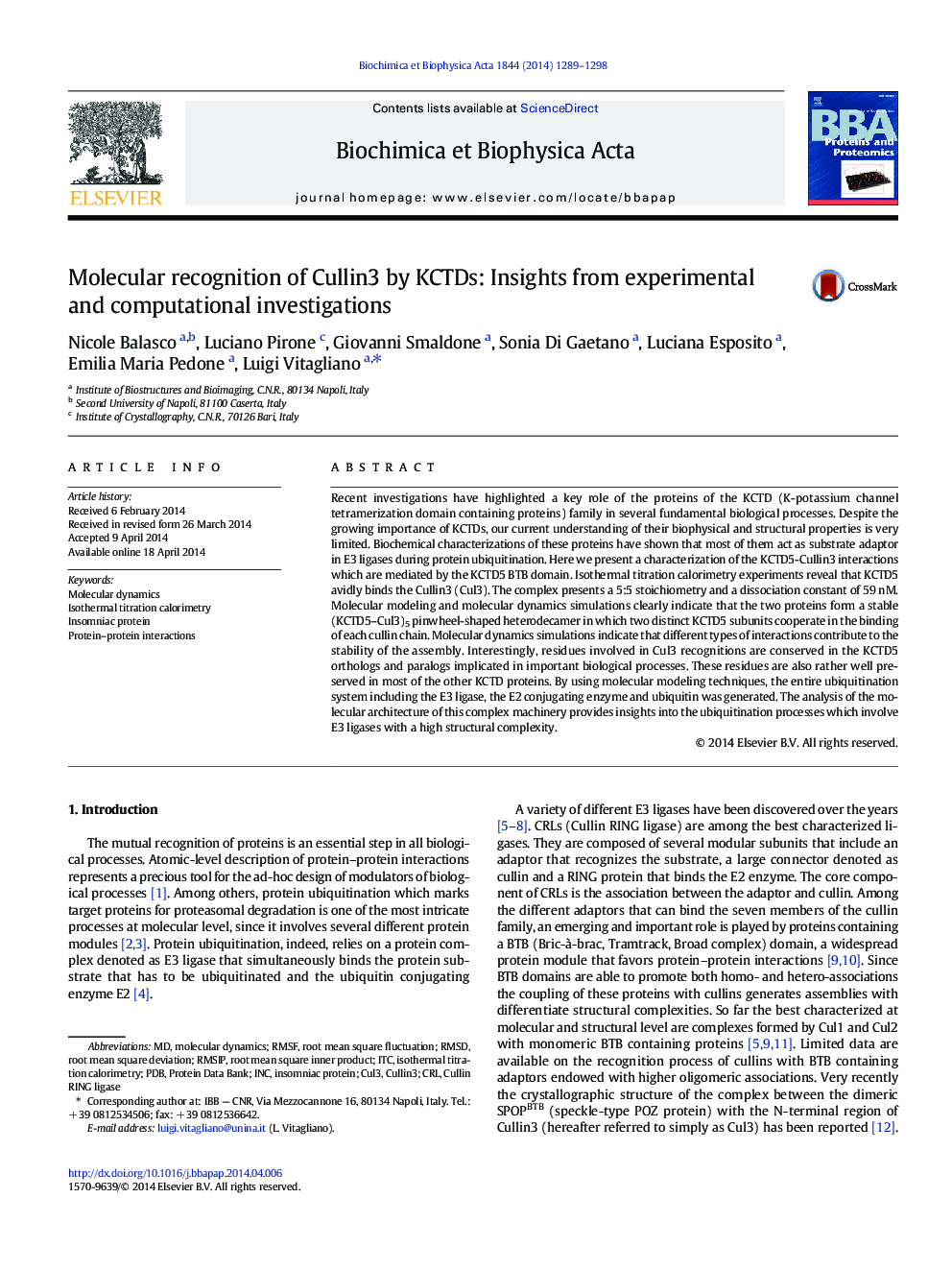| کد مقاله | کد نشریه | سال انتشار | مقاله انگلیسی | نسخه تمام متن |
|---|---|---|---|---|
| 1179542 | 962782 | 2014 | 10 صفحه PDF | دانلود رایگان |

• We report the first quantification of Cul3 binding to a protein of the KCTD family.
• MD simulations highlight the regions involved in Cul3-KCTD interactions.
• KCTD5-Cul3 recognition is characterized by a high level structural complexity.
• Homology modeling indicates that INC interacts with Cul3 using a similar mechanism.
• The architecture of the entire KCTD5-containing E3 ligase system has been analyzed.
Recent investigations have highlighted a key role of the proteins of the KCTD (K-potassium channel tetramerization domain containing proteins) family in several fundamental biological processes. Despite the growing importance of KCTDs, our current understanding of their biophysical and structural properties is very limited. Biochemical characterizations of these proteins have shown that most of them act as substrate adaptor in E3 ligases during protein ubiquitination. Here we present a characterization of the KCTD5-Cullin3 interactions which are mediated by the KCTD5 BTB domain. Isothermal titration calorimetry experiments reveal that KCTD5 avidly binds the Cullin3 (Cul3). The complex presents a 5:5 stoichiometry and a dissociation constant of 59 nM. Molecular modeling and molecular dynamics simulations clearly indicate that the two proteins form a stable (KCTD5–Cul3)5 pinwheel-shaped heterodecamer in which two distinct KCTD5 subunits cooperate in the binding of each cullin chain. Molecular dynamics simulations indicate that different types of interactions contribute to the stability of the assembly. Interestingly, residues involved in Cul3 recognitions are conserved in the KCTD5 orthologs and paralogs implicated in important biological processes. These residues are also rather well preserved in most of the other KCTD proteins. By using molecular modeling techniques, the entire ubiquitination system including the E3 ligase, the E2 conjugating enzyme and ubiquitin was generated. The analysis of the molecular architecture of this complex machinery provides insights into the ubiquitination processes which involve E3 ligases with a high structural complexity.
Figure optionsDownload high-quality image (353 K)Download as PowerPoint slide
Journal: Biochimica et Biophysica Acta (BBA) - Proteins and Proteomics - Volume 1844, Issue 7, July 2014, Pages 1289–1298